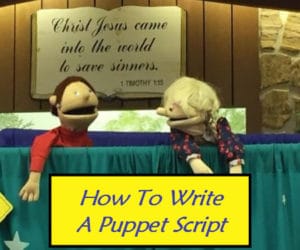How To Retain Ministry Volunteers
With some thought and planning, you can turn occasional helpers into committed volunteers.
One of the challenges of children’s ministry is keeping your volunteers engaged in and active in the ministry.
Perhaps you had some success finding volunteers. Some new parents have offered to help work with the young children. Why does it feel like, with every new activity or event, you are starting all over, looking for new volunteers?
Wouldn’t it be great if you had a team of loyal, dependable parents you could count on not only to help out at each event but maybe even to take over planning new programs?
It is possible. With these simple strategies, you can convert one time helpers into longtime volunteers.

Have A Plan
It takes time and planning to develop a solid team of volunteers. The keyword is cultivate. Recognize that it takes time and find a volunteer who has the time. This person should be dedicated to getting to know the parents and finding out their unique interests, discover their time commitment, passion, and skills.
By tailoring tasks to individuals’ experience and interests you are more likely to keep those volunteers and engaged beyond a single assignment.
Get Organized
In order to leverage church members’ talent and skill sets, you need to plan your volunteer assignment.
Too many times ministers ask for help at the last minute, limiting the size of the volunteer pool. For an upcoming event, even if the venue is booked, the schedule has been planned, and the food is arranged, nailing down the volunteer schedule is critical.
Parents who have jobs or care for elderly family members, for example, need notice to schedule. Advanced planning also helps you figure out what exact tasks have to get done and the skills required. How many volunteers are needed and how and when certain tasks, such as decorating or set up need to be completed.
Also, know who has volunteered in the past and what they did and where they did it.
For anyone who has volunteered, find another job for them within three to four months. At least ask, otherwise, they may disengage.
Volunteer management software or a shared spreadsheet to help you stay on top of details like this. The Top 15 Free and Inexpensive Volunteer Management Software Solutions
Be Specific And Personal
Too often ministry leaders send out a generic request for volunteers. A busy parent is more likely to respond to a finite and specific task, such as updating the ministry website or helping with cleanup, than to a notice that says “volunteers needed.”

When you are clear about what exactly you need from your volunteer force, you can make specific requests of the members at your church. A personal appeal more effective than a call for volunteers in the church bulletin.
If you know a parent works the overnight shift, ask him to help with an event during the daytime hours, not with an evening event. If you are are remodeling your chidlren’s classroom, enlist the help of members are painters or carpenters.
At our church, members who are carpenters and have workshops build VBS sets and are happy to do it, but these same men would not necessarily be comfortable taking part in a skit or teaching a lesson to young children.
When church members feel they have a meaningful contribution, they are more likely to volunteer again.
Provide Context
People will be more likely to get involved that your ministry is well-run and that the work you are doing supports a vision and specific goals.
For example, if you are raising money for a puppet ministry, allow church members to adopt a puppet. Have pictures of various puppets and the cost. Let them donate to buy a specific puppet. Or donate lumber or materials for a stage. When they see their puppet, or their curtains being used, it gives them a sense of accomplishment in their giving.
When church members see exactly where their money is going, they will be more motivated in their giving. We all give so much to the church and to missionaries that additional giving can sometimes be hard, but when you know exactly what the need is and where the money is being used, it makes it easier and creates a willingness.
I will give my last dollar to a hungry man, but giving a little more to a generic “Feed the Poor” program can be hard when personal financial responsibilities need to be met. It is easier to give when we can see the result of our giving.
It is sometimes hard to give when you do not know how the money will be spent. By having a detailed list of your ministry’s needs and a specific goals, church members will more involved and be able to see the result of their giving.
Create A Timeline
You should know that cultivating committed volunteers does not happen overnight. Ask a first-time volunteer to contribute to a project, not be the project leader. Once a person has been involved for a while, then you can ask them to take more responsibilities.
This approach will keep volunteers from getting overwhelmed with demands or requests. Asking too much, too soon, might drive them away from taking future volunteer assignment.
If a church member offers to help, make an effort to make their first volunteer experience positive and not overwhelming. If the volunteer has a good impression of your ministry, he or she may take responsibility as your ministry grows.
Be Patient
It takes time to build a strong volunteer base. Many ministers make the mistake trying to rush newly involved members into a time-consuming commitment. When someone raises a hand to help or suggest a new way of doing things, don’t pounce.
Find out how much that person is willing to do and be grateful for the contribution. Make the experience positive and then ask for a bit more from that person to help.
Say Thank You
If you want parents and church members to volunteer a second time, show your appreciation. This is a simple but critical step in cultivating your team.

Taking the time to say thank you can motivate volunteers to do even more great work for your church and children. Just as important, refrain from showing displeasure at tasks not done to your exact liking.
For example, if a volunteer is very thorough in cleanup efforts and holds you up from going home after an event, be sure keep any impatience in check and simply say thank you for a job well done.
If a job is not up to your standards or ability, but is adequate for the task at hand, don’t be too critical. The last couple years, my young daughters have started doing balloon animals with us.
Their earliest attempts were very disproportional, but rather than just discard them, we would say, let’s put them on the table and see who would like them. They always got chosen by someone.
By keeping the learning and helping experience positive, it has encouraged them to help more and more and get better and better. Encourage, don’t discourage helpers.
Most volunteers are not looking for public recognition, but they do need to know that their efforts matter. I think appreciation is probably one of the most important aspects of cultivating volunteer having a positive experience with a volunteer situation makes a huge difference.
Avoid Burnout
It is easy when you get an eager new volunteer to give them more and more to do. Then all of a sudden, the volunteer stops coming to events, starts avoiding phone calls, or is just too busy to help again. It is a classic case of volunteer burnout. But it can be avoided.
Most burnout is either self-induced or the result of a bad experience. Try to layer your volunteers who work on major activities each year. You may have two co-leaders for each event initiative and the event itself.
Divide an event into separate tasks. One leader and team for decorating, another for treats and a third for clean-up.
It helps catch the burnout factor earlier rather than later.
Also, it may seem counterintuitive, but reducing a regular volunteer’s commitments can be a smart long-term strategy. If a volunteer is overcommitted, scale back his or her duties before they burn-out. Make them take a break or get them help.
Also help prevent burnout by making it clear to volunteers that they can decline when they are asked to take on new tasks, so that they will not commit to more than they can manage. Some well-meaning volunteers may take on more than they have time for because they believe in the work you are doing.
Remember, people volunteer for a reason, they want to be able to make a difference. Keep that in mind and they will keep coming back.
















